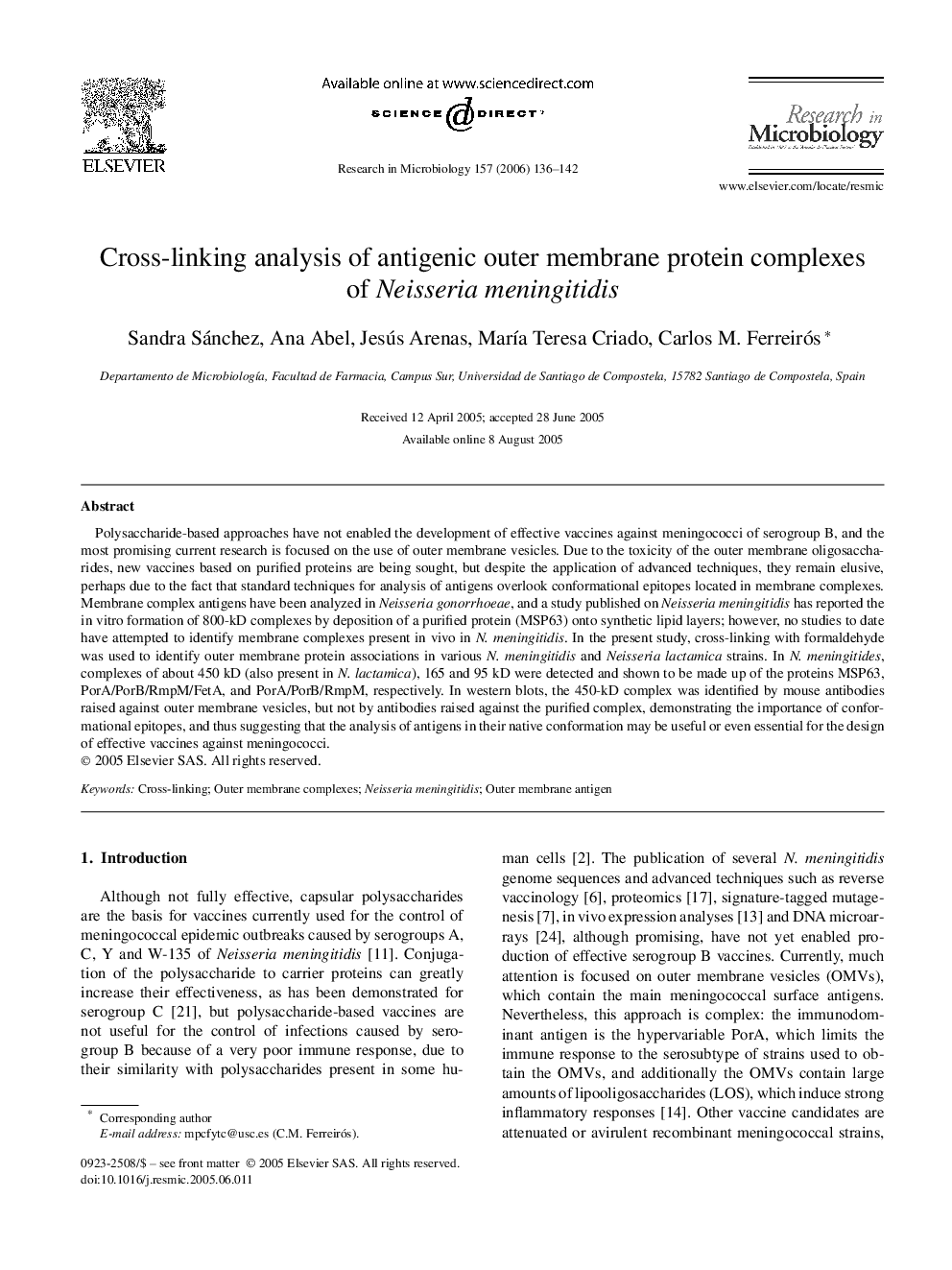| Article ID | Journal | Published Year | Pages | File Type |
|---|---|---|---|---|
| 4359523 | Research in Microbiology | 2006 | 7 Pages |
Polysaccharide-based approaches have not enabled the development of effective vaccines against meningococci of serogroup B, and the most promising current research is focused on the use of outer membrane vesicles. Due to the toxicity of the outer membrane oligosaccharides, new vaccines based on purified proteins are being sought, but despite the application of advanced techniques, they remain elusive, perhaps due to the fact that standard techniques for analysis of antigens overlook conformational epitopes located in membrane complexes. Membrane complex antigens have been analyzed in Neisseria gonorrhoeae, and a study published on Neisseria meningitidis has reported the in vitro formation of 800-kD complexes by deposition of a purified protein (MSP63) onto synthetic lipid layers; however, no studies to date have attempted to identify membrane complexes present in vivo in N. meningitidis. In the present study, cross-linking with formaldehyde was used to identify outer membrane protein associations in various N. meningitidis and Neisseria lactamica strains. In N. meningitides, complexes of about 450 kD (also present in N. lactamica), 165 and 95 kD were detected and shown to be made up of the proteins MSP63, PorA/PorB/RmpM/FetA, and PorA/PorB/RmpM, respectively. In western blots, the 450-kD complex was identified by mouse antibodies raised against outer membrane vesicles, but not by antibodies raised against the purified complex, demonstrating the importance of conformational epitopes, and thus suggesting that the analysis of antigens in their native conformation may be useful or even essential for the design of effective vaccines against meningococci.
